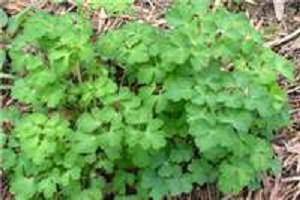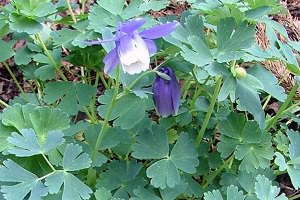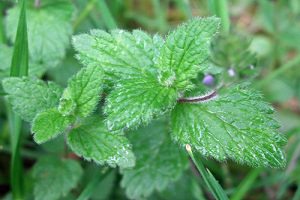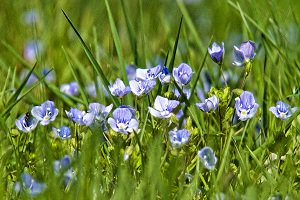Tiny blue flowers blooming in your lawn or garden can be a beautiful sight. But for many homeowners, these delicate flowers represent weedy invaders that need to be controlled. If you spot unfamiliar weeds with tiny blue blooms, how do you identify them?
This guide covers the most common weed species that produce small blue flowers. Learning to recognize these plants will help you understand how to manage them in your yard
Why Identify Blue Flower Weeds?
Weedy plants with tiny blue flowers may not seem like a big concern compared to large aggressively spreading weeds. But even small weeds can cause issues if left uncontrolled, including
-
Crowding out desired plants in flower beds or vegetable gardens.
-
Disrupting the uniform appearance of ornamental lawns.
-
Producing seeds that lead to further infestations.
Properly identifying blue flower weeds allows you to take appropriate control measures. Knowing which species you’re dealing with helps you select effective removal techniques and herbicide options when needed
Some tiny blue flower weeds also have beneficial uses. Identifying edible or medicinal species lets you take advantage of these plants rather than simply removing them as unwanted pests.
Common Tiny Blue Flower Weeds
Here are some of the most frequently seen weeds that produce small blue blooms:
Bluets
Bluets (Houstonia caerulea) produce cheerful little blue or white flowers less than half an inch wide. These hardy winter annuals thrive in moist soils and will spread to form a dense carpet.
Tiny bluets act as an important early spring food source for pollinators. But they can overwhelm garden beds and disrupt the uniformity of turfgrass. Hand pulling is effective for small infestations. Pre-emergent herbicides applied in fall help control larger populations.
Field Speedwell
Field speedwell (Veronica agrestis) is a low-growing annual weed covered in tiny blue flowers from spring through fall. Each bloom has four petals surrounding a yellow center. Speedwell spreads aggressively by rooting at stem nodes.
In healthy lawns, speedwell struggles to gain a foothold. But it can infest thinning or diseased turf. Improve cultural practices to encourage vigorous grass growth. For heavy infestations, broadcast or spot treatment with broadleaf herbicides containing 2,4-D, MCPP, or dicamba provides control.
Germander Speedwell
Similar to field speedwell, germander speedwell (Veronica chamaedrys) forms a mat of small leaves topped by tiny blue blooms. This perennial weed withstands mowing and spreads rapidly through surface stolons.
Combination products containing dicamba or triclopyr work well on germander speedwell. But avoid spraying these herbicides on newly seeded grass. Hand weeding may be a better option for young lawns.
Forget-Me-Not
Garden escapee forget-me-not (Myosotis sylvatica) bears clusters of small, bright blue flowers with yellow eyes. A single plant can produce over 1600 seeds that remain viable up to 30 years. Underground stems (rhizomes) also allow rapid vegetative spread.
Manual removal can work for small infestations, but forget-me-not requires diligence to eradicate. Returning plants missed during hand weeding will quickly re-infest an area. Pre-emergent herbicides or repeated applications of dicamba/triclopyr products help provide more complete control.
Venus’ Looking Glass
Venus’ looking glass (Triodanis perfoliata) displays unique blue flowers with flaring petals and a yellow-tipped pistil. As a winter annual, it forms small basal rosettes through fall and winter before sending up flowering stems in spring.
Pull young plants by hand in early spring to prevent seed production. For established stands, the broadleaf herbicides mentioned above can provide control. But avoid spraying near desirable broadleaf plants.
Blue-Eyed Grass
Despite its name, blue-eyed grass (Sisyrinchium spp.) is actually a member of the iris family. These small perennials produce delicate blue flowers with a yellow center. Grass-like leaves form dense clumps or mats close to the ground.
Blue-eyed grass prefers moist conditions. Improving drainage and soil conditions encourages healthy turf that resists invasion. However, removing established plants requires persistent hand weeding or careful use of broadleaf herbicides.
Less Common Species
While the weeds above represent the most frequently encountered blue flower weeds, you may come across some other species including:
-
Asiatic dayflower (Commelina communis) – Low-growing annual with small blue blooms. Spreads aggressively but has edible leaves.
-
Blue toadflax (Linaria canadensis) – Cool weather annual that bears tiny snapdragon-like flowers. Young plants pull easily but mature weeds have deep taproots.
-
Blue curls (Trichostema lanceolatum) – West coast annual with vivid blue flowers resembling tight ringlets. It colonizes bare ground rapidly.
-
Plaintain-leaved pussypaws (Cistanthe grandiflora) – Evergreen perennial with abundant little blue flowers above gray foliage. Spreads via stolons and re-roots from fragmenting stems.
Proper identification remains important before attempting control of any blue flower weeds encountered in your landscape. Pay close attention to each plant’s growth habit, leaf shape, root structure and other distinguishing features.
Control Methods
Tiny weed flowers usually indicate small, tender plant structures that respond well to basic control techniques:
Manual Removal
For limited weed populations, carefully hand pull or hand weed to remove entire plants including the roots. This works best when soil is moist but not saturated. Follow up frequently to eliminate any regrowth.
Use hoes or other tools to slice weeds off just below soil level. Remove and destroy weed debris to prevent re-rooting. Stay shallow to avoid damaging nearby desired plants.
Smothering
Cover small areas of weeds with opaque material to block light and kill the plants. Cardboard, yard waste bags, carpeting or commercial landscape fabrics all work well. Maintain cover for 4-6 weeks until all growth stops.
Selective Herbicides
When manual methods fail, targeted herbicides that kill weeds but not grass can selectively remove blue flower weeds from lawns. Look for products containing 2,4-D, MCPP, dicamba and/or triclopyr.
Carefully follow label directions to avoid harming desired vegetation. New grass seedings and transplants are especially sensitive to these compounds.
Pre-Emergents
Pre-emergent herbicides create a toxic barrier that prevents weed seeds from germinating. Apply these products to areas prone to blue flower weeds in early spring and/or fall. This reduces new weed populations while leaving established plants unaffected.
Prodiamine, pendimethalin and dithiopyr are common pre-emergents for home lawns. Use safely to avoid contaminating vegetable gardens or flower beds.
When to Allow Blue Flower Weeds
While blue flower weeds typically require control to limit their spread, you may decide to tolerate these plants in certain areas:
-
Naturalized meadows and informal plantings provide a suitable home for delicate blue blooms. The weeds blend in well with the naturalistic design while attracting pollinators.
-
Edible weeds like Asiatic dayflower can be allowed to grow in moderation in gardens where you harvest their leaves. Just be vigilant about preventing excessive seed production.
-
Early season bloomers like bluets offer needed forage for emerging pollinators. Allow some plants in out-of-the-way sections of your landscape. Remove them later once other flowers become available.
Even in these areas, it’s wise to monitor blue flower weeds and control any rapid spread. But a limited number of plants can add beauty and wildlife habitat without disrupting your landscape goals.
Tiny blue-flowered weeds may appear harmless. But don’t overlook the need to control their growth. Properly identifying blue weed flowers allows you to select suitable management options. A combination of manual removal, selective herbicides and pre-emergent products can help rid your lawn and gardens of difficult-to-eliminate species.
Yet you may also decide that an occasional blue bloom can be tolerated or even encouraged. Taking advantage of the benefits offered by edible or wildlife-friendly species transforms a weed into a welcome garden visitor.

COLUMBINE AQUILEGIA Aquilegia vulgaris

Type: Perennial Broadleaf
Height: 30 – 80 cm (12-32in)
Flowering Time: June – July

What’s it like?
A colourful plant with a long sparse stem. It has strong roots that can be difficult to pull out. The flowers have nectar at the bottom of the long stem which bees and butterflies can access. The plants usually have blue flowers but there are other varieties in shades of pink, purple, white, and some almost black.
Why is it a problem for your lawn?
This weed will self-sows freely. A greedy plant that inhibits the growth of nearby plants. Attracts red spider mites to the garden which will then move on to any nearby crops such as strawberries, apples and pears. All or parts of this plant are poisonous.
Control
Deadhead plants after flowering. The roots are very strong and can be difficult to remove entirely. Removing seedlings before they have a chance to spread or flower and set seed is obviously the ideal solution. However, if you are faced with a large spread of this weed you will need to use a chemical weed killer (herbicide) for effective lawn weed control, and if using a spot weed killer you will need to treat each individual plant.
GERMANDER SPEEDWELL veronica chamaedrys

Type: Perennial Broadleaf
Height: 10 – 35 cm (4 – 14 in)
Flowering: Early May to late June

What’s it like?
A low growing bright blue-purple kidney-shaped flowers with prominent veins in the middle. Flowers have a short life span, they open early morning full of nectar but the following day will wither and fall to the ground in the evening. Erect stem with hairy sides. Survives in all kinds of weather conditions. Originally grown as a rock plant until gardeners saw how invasive it became and became a troublesome lawn weed.
Why is it a problem for your lawn?
They root quickly even from small sections, which means they will quickly get out of hand in your lawn and garden borders. They produce numerous stems both creeping and rooting at the nodes. They spread forming a dense weed carpet on your lawn. Mowing your lawn will scatter the stem sections. If your lawn’s grass growth is weak it will allow the weed to spread quickly. If you add lawn clippings to your compost heap and then use the compost to spread around your garden, if the compost was not completely decomposed it will spread this weed around your garden. Even if you rake your lawn of lawn clippings, moss or weeds there will be many of the small rooted sections of this weed that will remain in your lawn.
Control
Like many weeds, Speedwell is much less likely to be a problem for your lawn if your lawn is healthy. By boosting your grass growth with a feed in the Spring or Summer months it will deter the spread of the weed. In Autumn a scarification, aeration together with a top dressing will benefit your lawn’s health. Speedwells are quite resistant to many of the lawn weed killers that are available to the general public. If you have a new lawn you must be very careful when applying weed killers as they will often cause damage if applied within 6 months of a newly sowed or turfed lawn.
How to Identify Small Weeds With Tiny Blue Flowers in Lawns
FAQ
Is there a weed with blue flowers?
Chicory (Chicorium intybus)
This cheerful, flowering weed is widespread throughout North America. It reaches four feet in height with bright blue flowers that grow right against the stems.
Should I pull up speedwell?
Natural control. Start by digging out as many of the speedwell plants as possible. Regularly hoeing seedlings and young plants as soon as you see them is the quickest and easiest method of control. The aim of hoeing is to sever the weed stems at or just below ground level, cutting the top growth from its roots.
How to deal with speedwell?
They need to be treated with a fungicide. Maybe neem oil. Afterwards, don’t water speedwell too often, it doesn’t like to be excessively wet. Literally just needs an inch of water per week. Water deeply twice a week and it will be fine. If it rains twice in a week, skip watering for that week.
Is garden speedwell a weed?
-
Free Spray Lawn Carehttps://freespray.comControlling Speedwell: Why Is this Pretty Weed a Problem?Apr 26, 2018 — Controlling Speedwell: Why Is this Pretty Weed a Problem? * How to Identify Speedwell. Also known as veronica or gypsyweed, this invasive plant blo…
